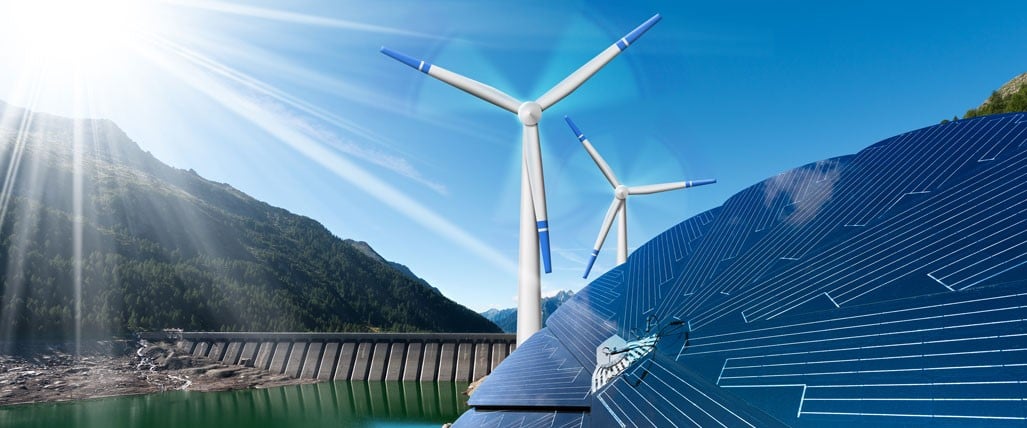- Thilo Riehl
- 11.04.24
- 1 min
- Funding advice, Energy consulting, Funding programmes Germany
Your contact person
Daniel Habermeier
The importance of electricity storage systems is growing with the energy transition. The development of sustainable battery systems was the focus of the 2023 International Conference on Life Cycle Management in Lille. A key topic of discussion: How are environmental benefits taken into account in the ecological assessment when recycling processes are used? Our LCA expert Daniel Habermeier was on site to discuss such questions.
The reason for the growing importance of electricity storage systems is the current endeavours in the energy transition from fossil fuels to renewable energy sources and the advancing electromobility. The rapidly increasing use of battery systems is accompanied by numerous new tasks. For example, batteries must be manufactured from raw materials that are as abundant as possible in order to minimise the shortage of critical raw materials. It should also be possible to recover the materials they contain using optimised recycling processes. A life cycle assessment (LCA) can accompany these tasks throughout the entire life cycle of the batteries and thus contribute to the development of more sustainable battery systems.

Daniel Habermeier took part in the 11th edition of the "International Conference on Life Cycle Management".
in Lille, northern France, as part of a research project supported by EurA that is looking into the development of more environmentally friendly lithium-ion batteries. The conference once again emphasised the importance of the upcoming tasks in the battery sector. Among the numerous presentations given during the conference, one topic came up again and again: Batteries.
The development of new software solutions for carrying out life cycle assessments of batteries was discussed in this context; or new databases for better availability and up-to-dateness of data in the battery sector; or the monitoring of recycling processes using life cycle assessments, which you can find out more about in this article.
One topic that was widely discussed among the LCA experts at the conference was the allocation of savings through the recycling of batteries. Due to the highest quality standards, battery manufacturers today generally use almost exclusively primary raw materials, i.e. materials that are used for the first time. Batteries that have reached the end of their life can be recycled and re-enter the market as recycled or secondary materials. A reduction in environmental impact can be achieved if less primary material has to be produced and used.
A valuation approach in which the credit is awarded by using the environmentally favourable secondary material thus motivates battery manufacturers to use recycled materials. The other valuation approach distributes the credits at the end of the battery's life, i.e. recycling, when the recovered secondary material is made available to the market. This approach thus motivates the battery manufacturer to "design for recycling", which means that care is taken during production to enable efficient recycling at the end of the utilisation phase.
It is therefore necessary to determine where the environmental benefits should be included in the ecological assessment. If a complete allocation is made to both places, the result is too good and the recycled material incorrectly improves the life cycle assessment too much.
A possible solution to this problem was proposed by the EU Commission's Joint Research Centre as part of the Product Environmental Footprint (PEF) method. A formula ("circular footprint formula") for calculating the ecological footprint is presented here. This contains a so-called A-factor, which allows the benefits of recycled and secondary materials to be divided proportionally. This means that there is no over-calculation overall, but both the use and provision of secondary material is "rewarded". This approach can be used to achieve further progress in the field of batteries and drive forward their development as sustainably as possible.
However, in order to utilise the strengths of this methodology effectively, it is necessary for the EU to publish comprehensive A-factor lists on materials at regular intervals, which reflect the ratio of use and provision of secondary materials on the market as realistically as possible. In order to further optimise the methodology, the formula and the factors used will be further adapted during the transition phase of the PEF.
|
|
||
|
Conclusion: The development of sustainable battery solutions is closely linked to the application and methodology of life cycle assessment. There are different approaches when it comes to the assessment of recycled materials. Have I aroused your interest in the topic of the ecological assessment of batteries and their recycling? Please feel free to contact me at any time!
|

Your contact person
Daniel Habermeier
EurA AG
T- 079619256-0Max-Eyth-Straße 2
73479 Ellwangen
info@eura-ag.com